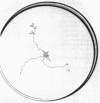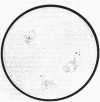Abstract
The nematode Caenorhabditis elegans is attracted by at least four classes of attractants: by cyclic nucleotides, cAMP and cGMP; by anions, Cl-, Br-, I-; by cations, Na+, Li+, K+, Mg+; and by alkaline pH values. The nematode's behavioral response to gradients of these attractants involves orientation and movement up the gradient, accumulation, and then habitutation. Comparison of the tracks of wild-type and mutant animals responding to gradients of attractants indicates that sensory receptors in the head alone mediate the orientation response and that the direction of orientation is determined by the lateral motion of the head. Therefore, the orientation response is a klinotaxis.
Keywords: cAMP, anions, cations, hydroxyl ions, klinotaxis
Full text
PDF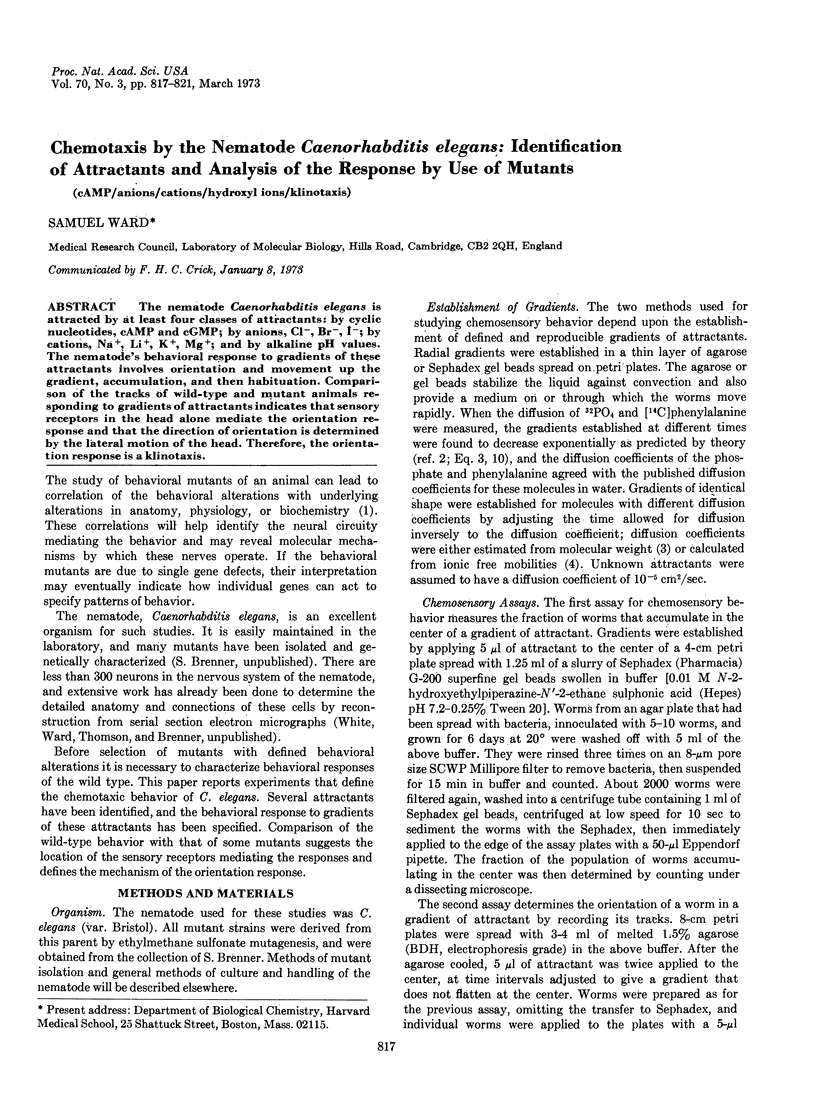
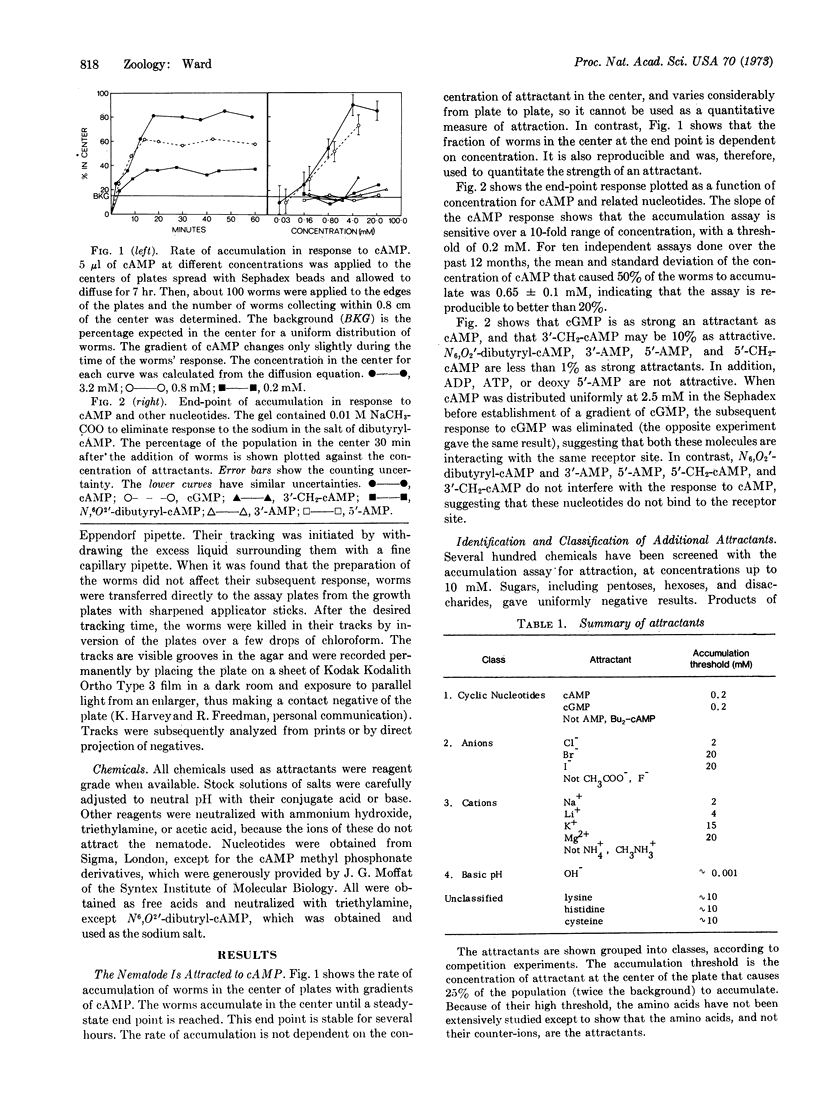
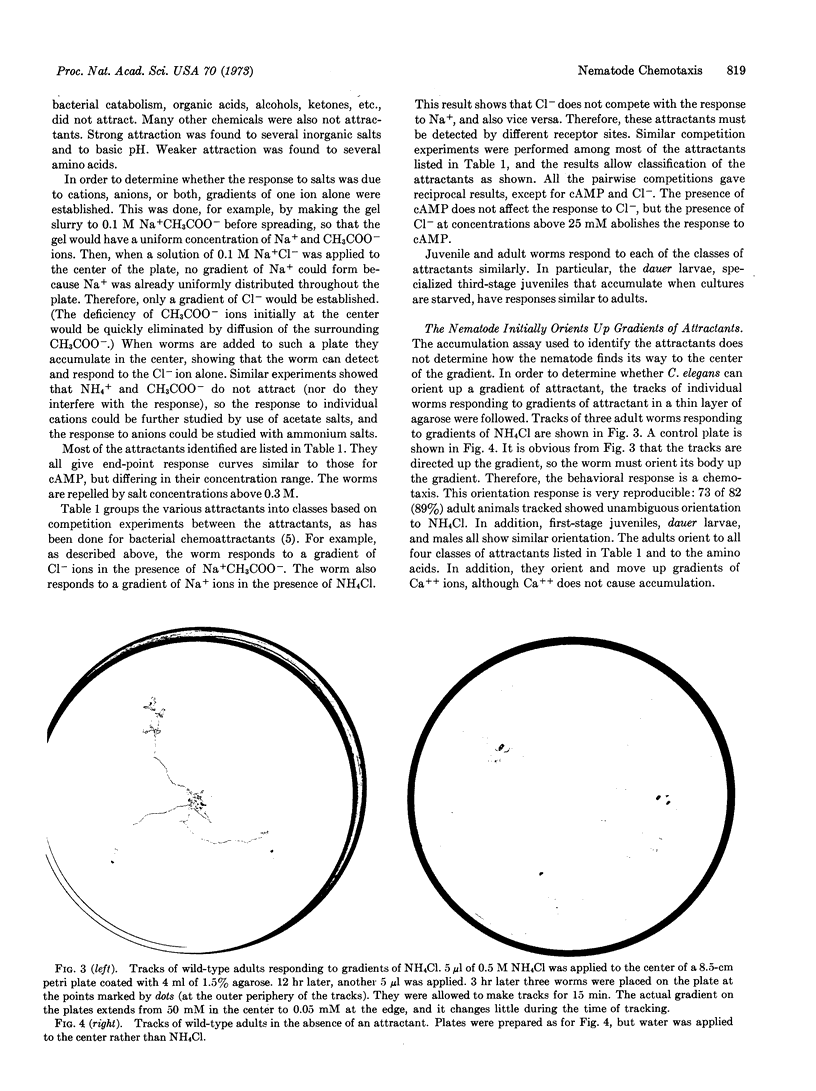
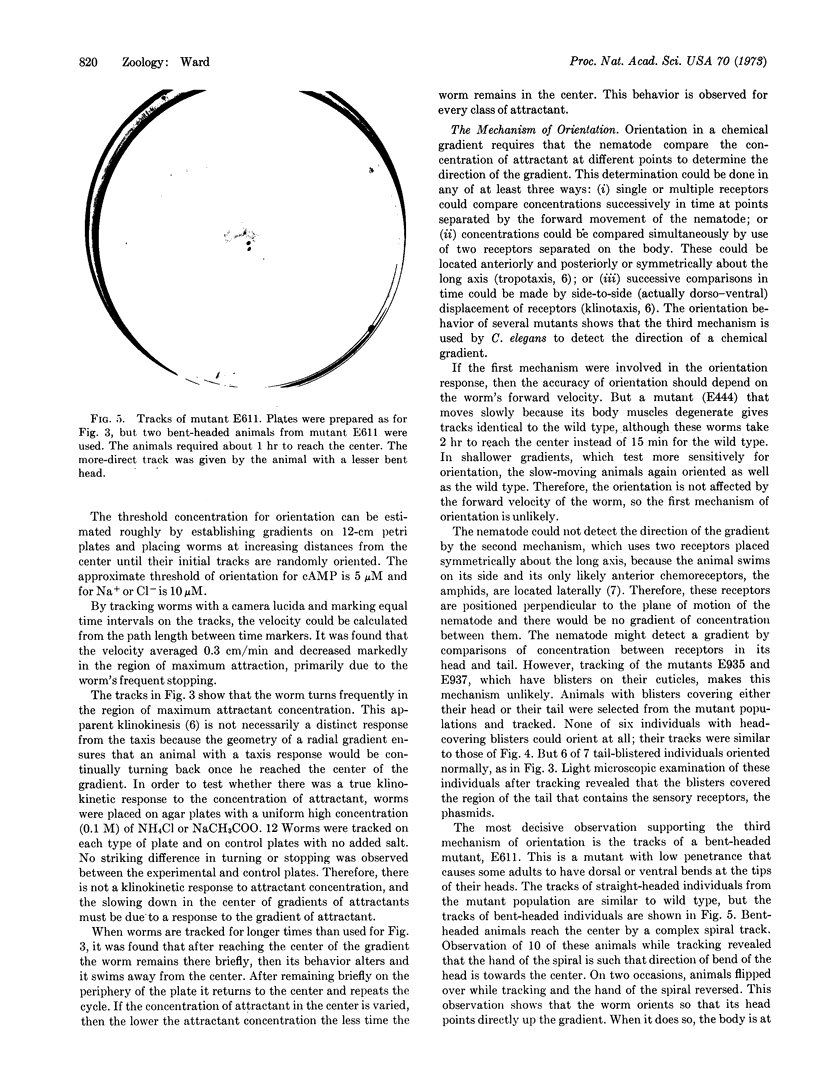
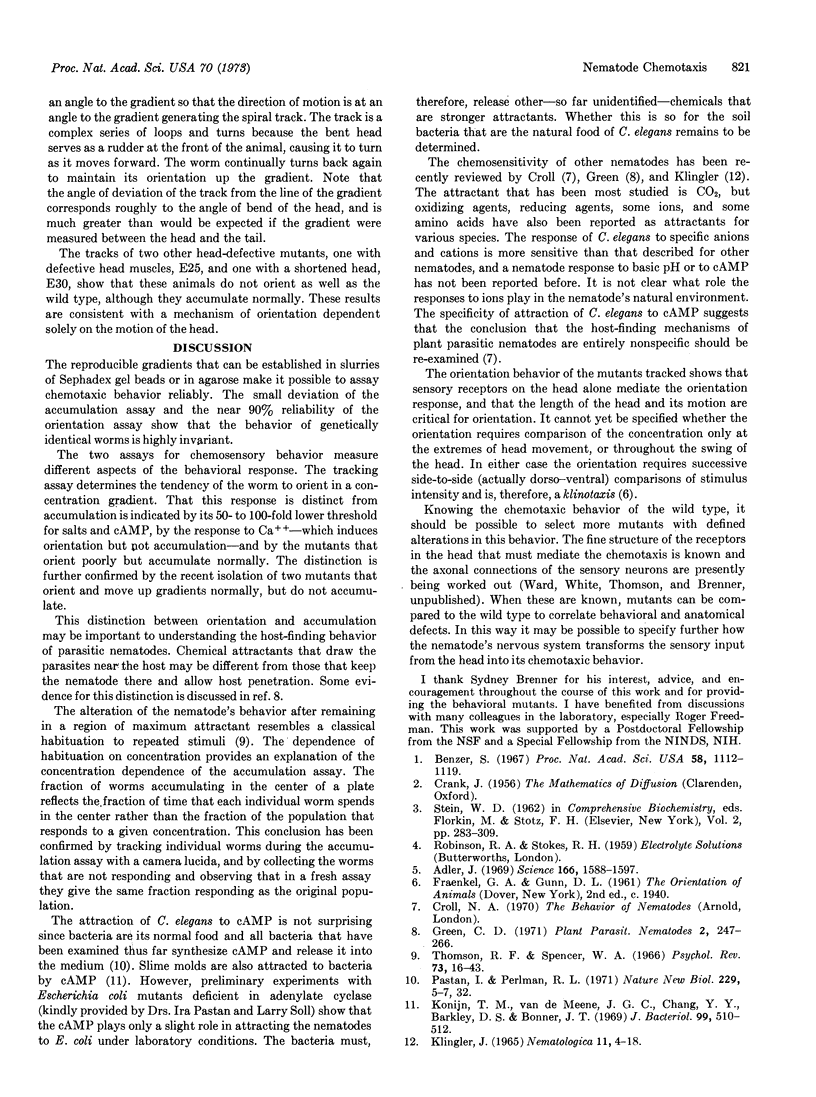
Images in this article
Selected References
These references are in PubMed. This may not be the complete list of references from this article.
- Adler J. Chemoreceptors in bacteria. Science. 1969 Dec 26;166(3913):1588–1597. doi: 10.1126/science.166.3913.1588. [DOI] [PubMed] [Google Scholar]
- Benzer S. BEHAVIORAL MUTANTS OF Drosophila ISOLATED BY COUNTERCURRENT DISTRIBUTION. Proc Natl Acad Sci U S A. 1967 Sep;58(3):1112–1119. doi: 10.1073/pnas.58.3.1112. [DOI] [PMC free article] [PubMed] [Google Scholar]
- Konijn T. M., van de Meene J. G., Chang Y. Y., Barkley D. S., Bonner J. T. Identification of adenosine-3',5'-monophosphate as the bacterial attractant for myxamoebae of Dictyostelium discoideum. J Bacteriol. 1969 Aug;99(2):510–512. doi: 10.1128/jb.99.2.510-512.1969. [DOI] [PMC free article] [PubMed] [Google Scholar]
- Thompson R. F., Spencer W. A. Habituation: a model phenomenon for the study of neuronal substrates of behavior. Psychol Rev. 1966 Jan;73(1):16–43. doi: 10.1037/h0022681. [DOI] [PubMed] [Google Scholar]



